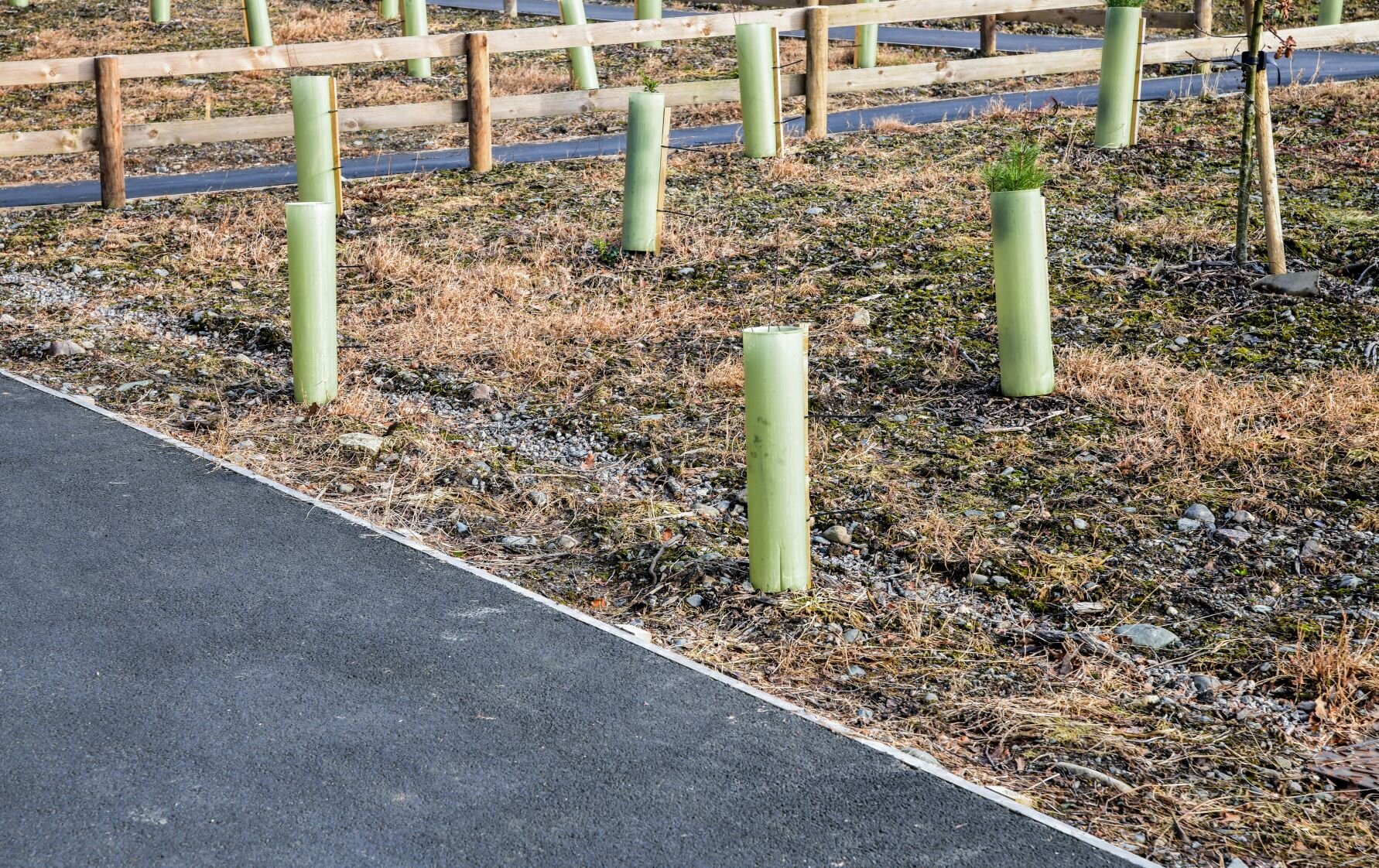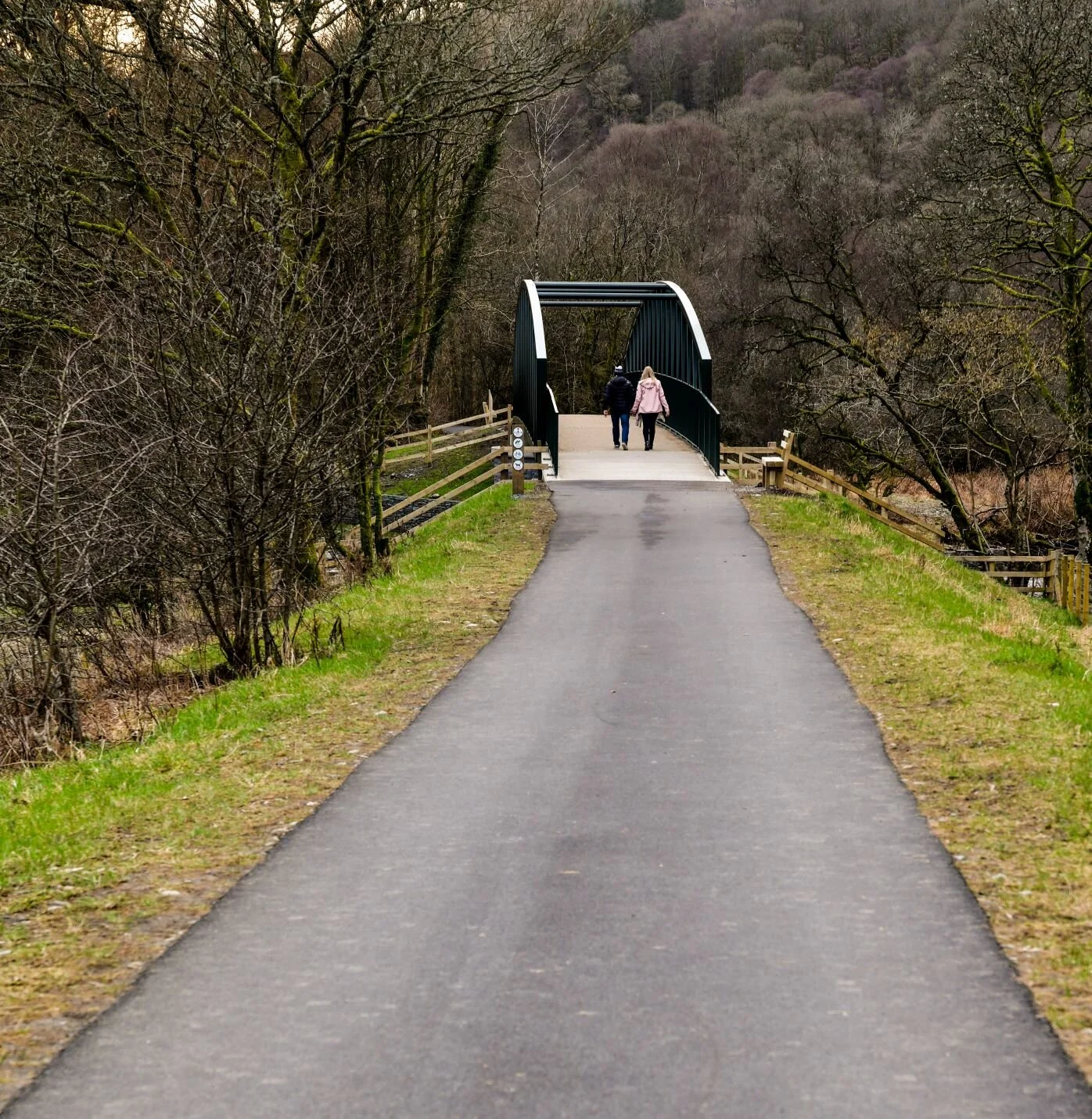A throw of the dice: Keswick-Threlkeld Railway Path
Aim of the experiment
To have some fun, through playing some writing-walking games! And while we’re at it, to challenge linear thinking, to encourage us to notice things we might not otherwise while out on a walk, and to access subconscious thoughts and observations through chance procedures.
Background
Our culture teaches us to think about life in linear ways.
From A to B.
From birth to life to death.
From the setting of an aim, to achieving a target.
From discovering a problem to seeking a solution.
Or as simple as walking from Threlkeld to Keswick along the railway path!
Yet is the world actually not much messier than that?
We also have strong preconceptions about what art and beauty are… Yet in the process of framing the worldlike this, there is a whole other world we pass by.
Here, instead of us deciding where and how far to go, the numbers on the rolled dice decide, thereby introducing chance into our explorations. The aim is to encourage us to notice other things, through full use of our senses, memory and imagination (and to access our subconscious dreamworld too).
Route instructions
Click on the image above to open an interactive version of the map on Viewranger,
or you can download the GPX file of my route here. (© OpenStreetMap contributors)
Route grading: Easy / fully accessible (6.26 miles there and back, 3.13 miles one-way, 938 feet of ascent - but this is v v gradual)
Starting point: 200m SW from the road junction off the A66 to Threlkeld village (see here on google maps) or Keswick Leisure Centre (see here).
Route description: This route follows the length of the Threlkeld to Keswick Railway path, recently re-opened by the National Park Authority following extensive damage caused by Storm Desmond in 2015. The path is fully accessible for its entire length, and can be accessed either from Keswick of Threlkeld. While it is also possible to access the route halfway along, parking is difficult, so this is not recommended.
Route adaptation for walk-from-home
This experiment can be completed on any linear route (path, track, road…) close to your home. It might be particularly interesting to do it on a route with which you are really familiar, for example your usual morning dog walk. It’s also possible to adapt this exercise to more challenging routes, which head off-the-beaten path (in other words to use the throwing of the dice to actually create the route, as you go, and not necessarily sticking to paths). If you go for this latter option, then please make sure to stay within your own navigational capacities, don’t climb walls or fences or cause other damage etc. I will try and upload an exercise of this latter type in coming weeks.
Writing & Art Ideas, & Virtual Alternatives
nb you will need a set of up to 4 dice for this exercise. For the writing exercise, you will also need to print out either of the following two lists of writing prompts: Writing exercise 1 or Writing exercise 2, and to cut out each prompt individually, fold them up and take them out with you in a bag (to draw from!)
Writing & Art Ideas
Start at either end of the path, or you might choose to begin at the midpoint where there is a shelter and an interpretation board. From wherever you start, the number you roll on your dice is going to determine how many minutes you walk, run or wheel, and in which direction. An even throw on the dice tells you to walk towards Keswick, and an odd number to walk towards Threlkeld (if your throw takes you off either end of the path you can either end the experiment there, or turn around and continue back the way you’ve come). Each time you get to the end of a leg, either:
(a) draw a ‘prompt’ from your bag, and follow the instructions to do a piece of writing; or
(b) take a photograph or make a sketch (without moving!)
When you get home, use your notes as the starting point for a piece of writing OR edit your photographs / sketches into a slide show of chance encounters (not-quite-what-you-would-have-photographed or drawn otherwise!)
Virtual alternatives
1. use the slide show from my own walk along the Railway Path (below) as the starting point for a piece of writing, taking down notes on each image as it flashes up in turn. I have deliberately randomised the order in order to try and replicate the chance nature of the exercise.
2. Adapt this experiment to play virtually using roads on Google Maps, starting out at your front doorstep, and entering street view every time you come to the end of a leg! For example, each number on the dice could represent 1cm of distance travelled on the map, with an odd number involving moving forwards, and an even number moving backwards. Where do you get to, and what do you see? At the end of each leg, take one of the above prompts from a bag, and use it to either take notes on the scene, or to sketch a particular element of the scene (using your imagination to draw things like tastes and smells!) If you are drawing, do each sketch on the same piece of paper, to create an image which combines a wide range of impressions into a single work of art. If you are writing, take your notes and use these as the starting point for a piece of writing once you have come to the end of your virtual walk.
My own poetry
From exercise #1: the below poem took me by surprise. There are a few prompts in this exercise which ask you to use your imagination, but I hadn’t considered that one of these would become the poem’s key thrust (instead I’d thought that the exercise would lead to very objective writing!)
Self isolation
(Keswick-Threlkeld Railway Path, Feb 2021)
1865. The first train to travel the line.
A young girl, in her final year of childhood,
turns to her mother as the train sweeps round
another long-slow accelerated bend, and asks her,
‘are we flying?’
Her mother doesn’t answer. She is too consumed
by the creaking feeling of her ribs expanding
and contracting as she breathes, as if to wonder:
is this all that’s involved in living?
I see two dead branches of a tree
as mossy antlers. The oak in the centre
of the passing river withstands white waters.
Bare fenceposts step gingerly into the flowing
water. Toes pointed like a Degas dancer.
100 years from now, the young girl’s perspective
shall have long been shadowed by tunnels of trees.
The bark in the soil around her grave feels rougher
than the space between her thumb and forefinger.
Boulders, just beneath the surface of water.
Eddies pushing back upstream.
If you’d only asked her, she’d have told you.
Scepticism is but a narrowing of river bend.
A world of so much news and so much nothing, faster.
Such trees such train such river to the dipping
of the sun behind the trees’ horizon.
From exercise #2: the writing which resulted from this exercise was much more of the kind I’d have expected, yet each ‘fragment’ seemed to have a different style. Rather than try and homogenise them, I decided that this was perhaps the point.
Exercises in running
(after Raymond Queneau)
i. style exhibit A
enjoy get active find out more
and use your mobile phone for
YOU ARE HERE!
please share follow the code
keep left slow down and use short leads
ii. style exhibit B
or so much passing time
and nothing
I can do
beyond these four isolated catkins
that hang like imperfect sculptures
the relief of spring
the sky is bluer than humanly possible –
the sun glares in some sitting water from
the last few days of rain
I lack only for fast-flowing water
through my veins
iii. Style exhibit C
no wind shares with me an unrequested breath
of perfume from a passerby –
chatting red coat chats to chatting white coat
it’s been two years now and two whole days while
further on a single woman in a beanie hat and furry
hooded parka picks up her darling puppy’s
doings in a see-through plastic bag
but as for him?
the man who claims I found this five pound note
beneath the picnic bench and will not let it rest
until I tell him what I’ll spend it on
and I say nothing
iv. Style exhibit D
When I emerge from the darkness of this tunnel
will a road bridge span the limits of the sky?
Discovered that my blood
was warmer than wood.
Decided that I’d focus on
some wildlife spotting
and a pigeon sauntered by.
Through the trees, I see Catbells,
Maiden Moor, High Spy.
The wooden railings at the bridge are already
smoother on their outer river-facing side.
v. Style exhibit E
I’m walking in a straight line in the opposite
direction from the sun. I hear birds singing
but I do not know their names.
Pulses of white-noise riverbed.
The furthest thing
that I can see is hiding from me.
Virtual exercise poem
A final throw of the dice
Just look at you.
A face composed of pebbles.
Three parallel limbs of birch.
Prosthetic hearts for running water…
The trees floated off downstream
at my final time of asking
while the fenced-in sky enclosed
our reflections with ugly sunsets,
bridges to be suffered,
fresh buds of landscape dripping
from severed branches like oil.
The tips of the holly
leaves have been
dipped in your curved blood.
Beneath the world
I found another world
where I least expected you.
It was old and mossy. I gave birth to it.
Photo Gallery



























